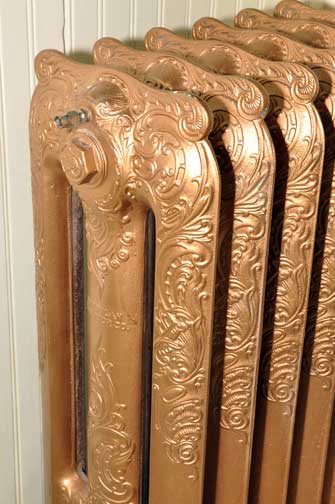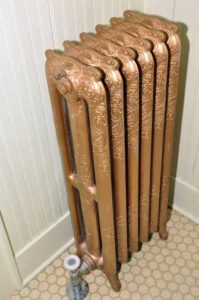Small Home Gazette, Spring 2015
Our Radiators—A Love Story
As we end another heating season, I look at our home’s radiators with gratitude. They were installed 100 years ago when the house was new and have provided quiet, clean, even heat every cold day during the 40 years Liz and I have lived here.
Of our seven radiators, the two in the living and dining rooms are long and low, fitting under windows. They are each covered with a sturdy metal still-in-great-shape grill, probably from the 1950s. Four of the remaining are the wonderfully ornate “Rococo” style by American Radiator Company. They are my favorites. I have stripped and painted two of these, using different methods.
Before unscrewing the radiators from their pipes, I drained the water using the drain valve at the lowest point of the boiler in the basement. That valve has hose thread, allowing drainage to the basement sink or floor drain.
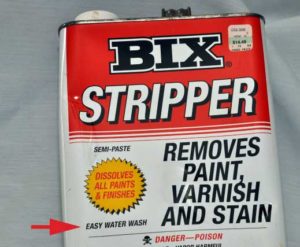 The first radiator was from the upstairs bathroom and was stripped out-of-doors on a second floor deck covered first with a heavy plastic sheet and then newspaper. I brushed traditional methylene chloride paint remover (BIX Stripper Easy Water Wash) on the surface, brushing in one direction from top to bottom. This BIX product is my favorite because it is neutralized by water, making it safer to use and easier to clean up.
The first radiator was from the upstairs bathroom and was stripped out-of-doors on a second floor deck covered first with a heavy plastic sheet and then newspaper. I brushed traditional methylene chloride paint remover (BIX Stripper Easy Water Wash) on the surface, brushing in one direction from top to bottom. This BIX product is my favorite because it is neutralized by water, making it safer to use and easier to clean up.
After letting the chemical do its work (about 20 minutes), I scraped the loose paint with a narrow putty knife (or paint scraper), wiping it off on the inside lip of an opened milk container. This helped contain the mess. I then used a wire brush with a handle to remove any remaining loose paint.
A second application of BIX took off more of the stubborn old paint. I wiped down the radiator with paper towels; sprayed it with water from a spray bottle; wiped it again; and let it dry in the sun. After a light sanding and dusting, I used a spray can of primer paint to lightly coat the radiator. This would show off any remaining paint, which I could then remove with a slotted screwdriver, sandpaper or wire brush.
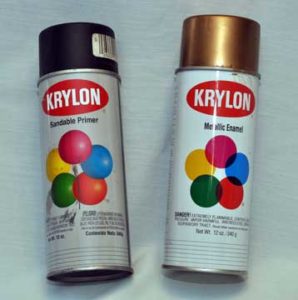 I recommend using Krylon brand spray paint. When I am satisfied that as much old paint as possible has been removed, I sprayed on more gray primer—lightly coating the outside surface of the radiator and leaving the inner surface alone. I then sprayed on two topcoats of one of Krylon’s metallics. When these radiators were new, they were painted using metal powder suspended in a clear liquid. Now it’s easy to use a can of spray paint.
I recommend using Krylon brand spray paint. When I am satisfied that as much old paint as possible has been removed, I sprayed on more gray primer—lightly coating the outside surface of the radiator and leaving the inner surface alone. I then sprayed on two topcoats of one of Krylon’s metallics. When these radiators were new, they were painted using metal powder suspended in a clear liquid. Now it’s easy to use a can of spray paint.
The second radiator was in the kitchen. I used a two-wheel dolly to move it to the emptied-out dining room to strip it mechanically by burnishing. Moving it outside would have involved navigating steps but refinishing it inside did mean I wouldn’t be using BIX, which requires
ventilation.
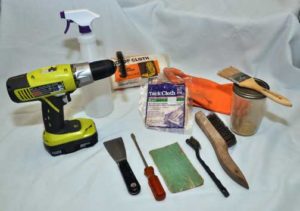
Blood’s tools included drop cloths, wire brushes, scraper, screwdriver, sandpaper, protective gloves, and a re-sealable jar from which to apply the paint remover.
A plastic sheet and newspapers protected the floor. I pushed an old slotted screwdriver across the paint layers, breaking the paint bond of multiple layers of paint. Then I ran a wire brush attached to a drill across all outer surfaces, assuring whatever remained was secure and paint-able. After a light sanding and dusting, I followed the same priming and painting steps. (No damage was done to the room’s surfaces. When spraying paint, overspray should fall no more than a foot or two beyond the item being painted.)
Each radiator took about half a day to strip, with repainting in an era-appropriate metallic paint adding a few hours. Krylon usually dries in 12 minutes or less. It is easy to touch up any nicks in the paint when moving a radiator back into place or anytime later.
After refinishing each radiator, I refilled the boiler and radiators with water using the refill valve at the boiler.
The boiler that heats our radiators is also the same one installed when the house was new in 1914. Back then, the owner shoveled coal to burn. Just before or after WWII, the use of coal was replaced by a natural gas fixture and thermostat, and our boiler has plugged along without more than an annual vacuuming of the boiler burner chamber and bleeding of the radiators.
No new boiler for us. We think the money we save by NOT replacing the boiler makes up for any energy savings with a newer model. Just reliable heat. I love our radiators!
Bill Blood is a Bungalow Club member and “This Old Handyman.”









